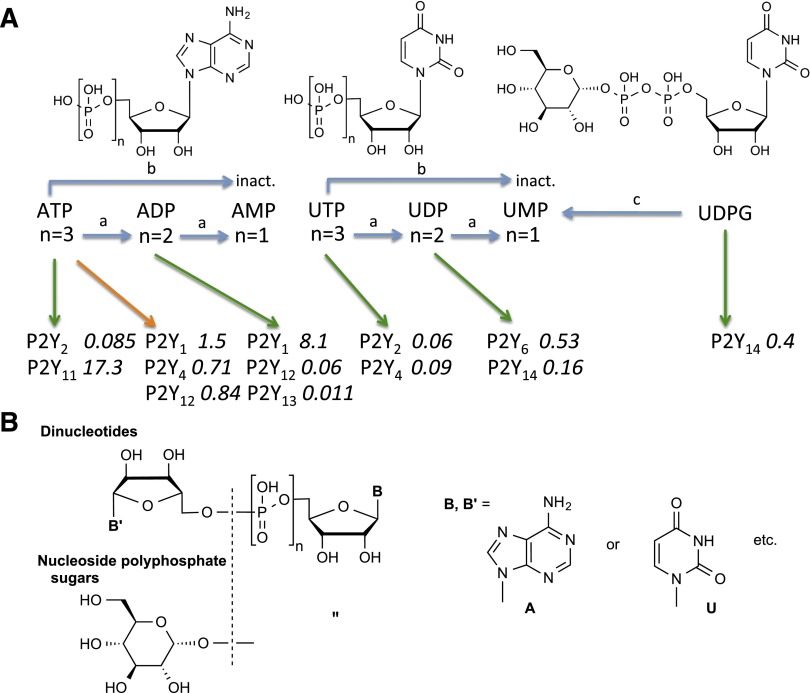Fig. 1.
(A) Action at P2YRs of nucleotides released from cells (e.g., ATP, UTP, and UDPG) and their conversion outside the cell to 5′-diphosphates, which act at different P2YRs, and/or to 5′-monophosphates, which are inactive (inact.). 5′-nucleotidase catalyzes the final conversion of AMP to adenosine, which acts at its own set of four GPCRs (adenosine A1, A2A, A2B, and A3 receptors). There is a redundancy of ligands that activate various P2YR subtypes. The nucleotides may act as full agonists (green arrows) or variably partial agonists and antagonists (orange arrow). EC50 or IC50 values (µM) at human P2YRs from measurement of adenylate cyclase or phospholipase C activity are indicated in italics. Weaker interactions, such as UDP, as an agonist of P2Y2R (∼10) or P2Y6R (16) are not shown. The enzymatic conversions are catalyzed by ecto-nucleotidases (blue arrows): (a) ecto-nucleoside triphosphate diphosphohydrolases (CD39s) act on either 5′-triphosphates or 5′-diphosphates; (b) ecto-nucleotide pyrophosphatase/phosphodiesterases convert 5′-trimonophosphates to 5′-monophosphates; (c) NPP1 and NPP3 hydrolyze UDPG to produce UMP. (B) Naturally occurring dinucleotides (n = 2–7; B is a nucleobase) are shown schematically and described in detail later in the text. The dinucleotides, such as Up4A and Ap4A, may either act directly on P2YRs, in some cases, or be converted by ecto-nucleotide pyrophosphatase/phosphodiesterases to active mononucleotides, such as ADP. P2YR potencies of simple dinucleotides are reported (Shaver et al., 2005).

